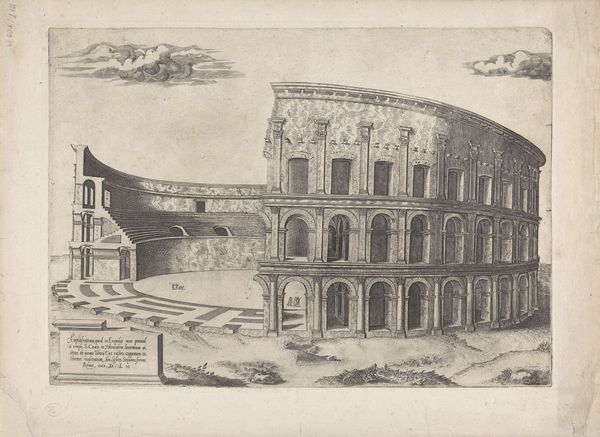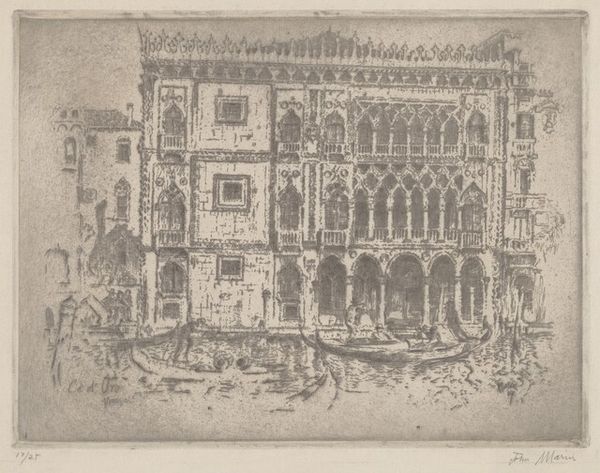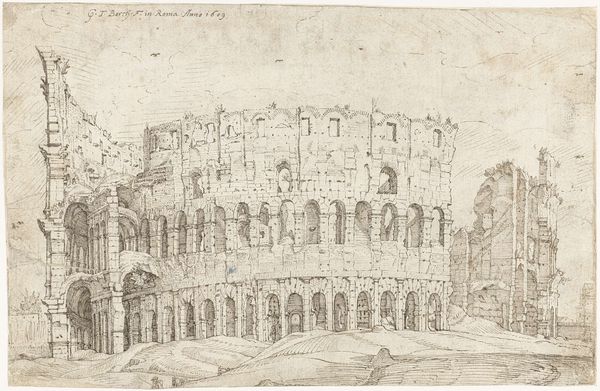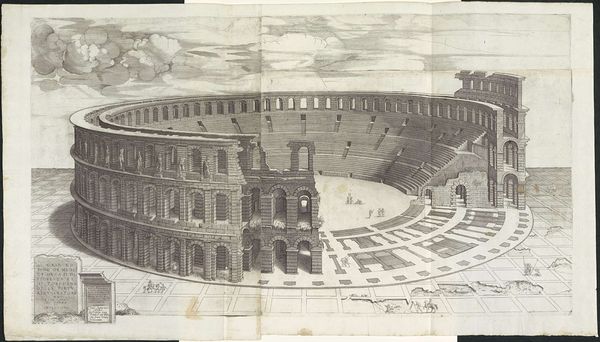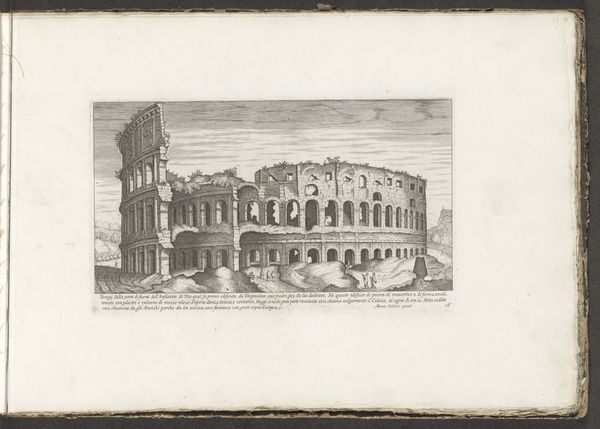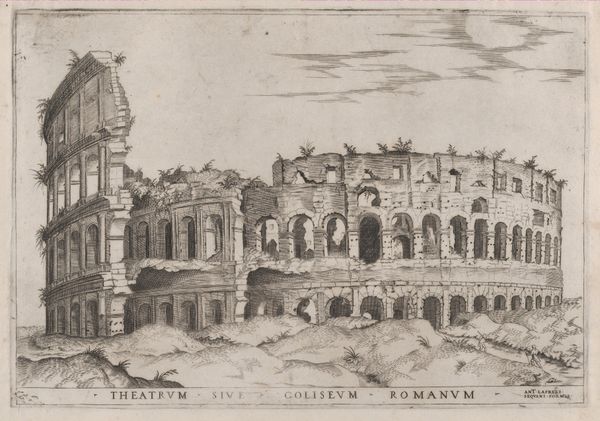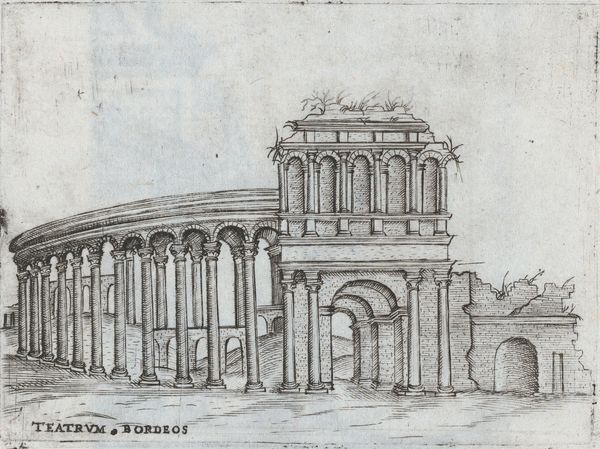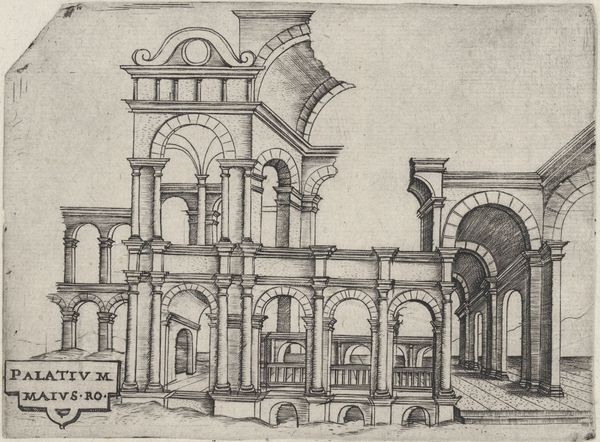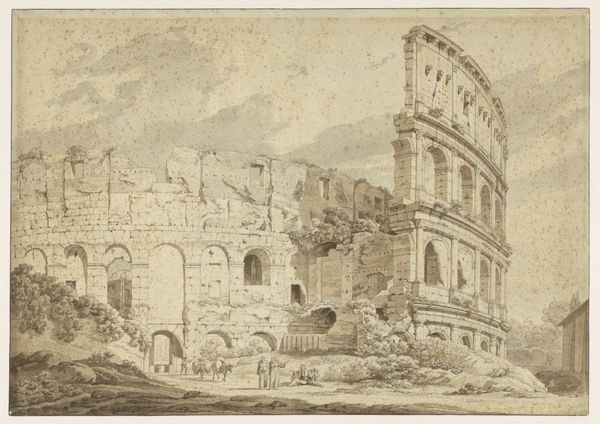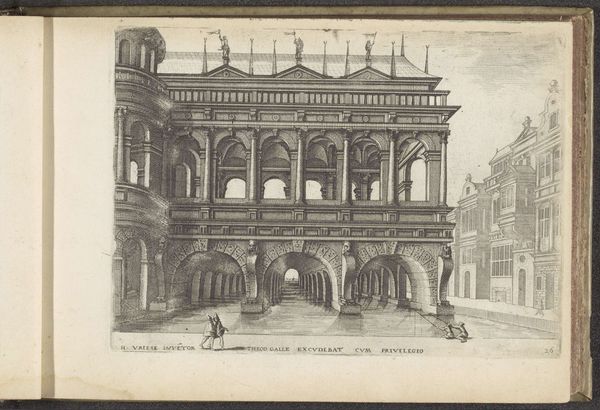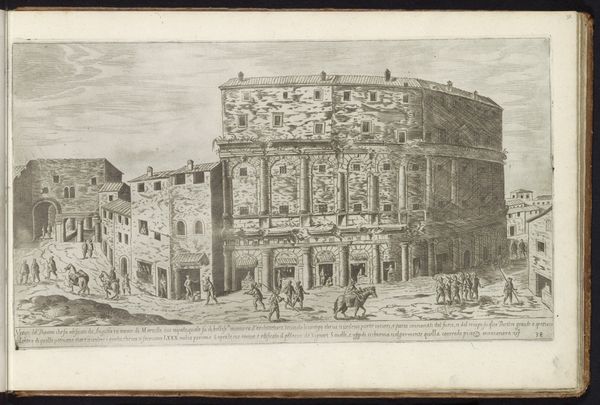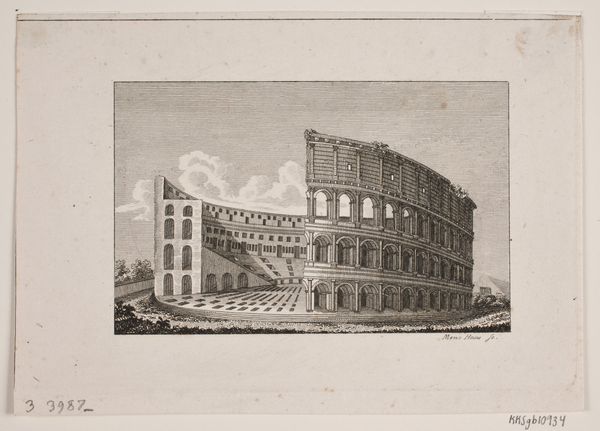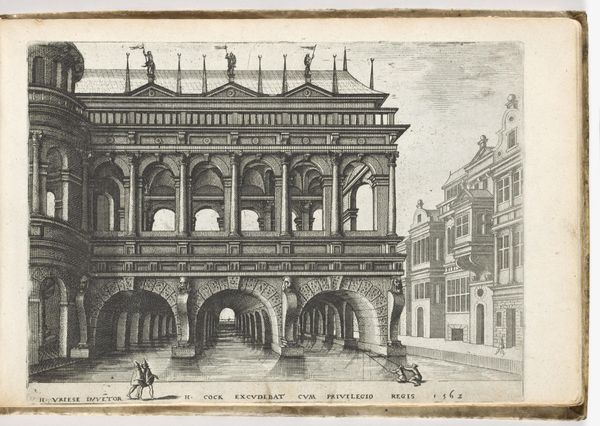
print, engraving
# print
#
landscape
#
cityscape
#
italian-renaissance
#
engraving
#
realism
Dimensions: height 234 mm, width 340 mm
Copyright: Rijks Museum: Open Domain
Curator: Here we have an engraving simply titled "Colosseum," dating from somewhere between 1522 and 1577. It resides in the Rijksmuseum. Editor: My first impression is one of melancholy, of time's relentless march. Even in its ruined state, the Colosseum exudes power, but it's clearly a wounded giant. The delicate lines of the engraving emphasize the fragility. Curator: It's interesting you say that. Considering its location in the Dutch museum, it prompts reflection on Rome’s enduring impact across European cultural and political history. How architectural feats become powerful symbols, later captured and disseminated through printmaking to extend its propaganda and its historical reach. Editor: Exactly. For me, the architecture is symbolic, reflecting power but it speaks volumes even now, centuries after the Empire dissolved. See how plants sprout from the crumbling stone? New life from ruins… Curator: And the medium—engraving—also has an interesting history. Its function was key in disseminating information, and the details that had to be carefully translated became embedded within collective European imagery. The image had a powerful ability to solidify architectural projects for wider dissemination beyond patrons and builders. Editor: It reminds us of cycles: construction, destruction, renewal, then more building! We keep returning to these archetypes; gladiatorial combats, communal assembly and it all echoes even today. Curator: Indeed, seeing a Renaissance depiction forces consideration of historical representation. To what degree is this engraving attempting to represent reality? And to what extent does it convey the artist’s interpretation, influenced by the social and political context of the time? How much does art mediate understanding, not just mirror facts? Editor: And doesn't that prompt you to ponder: is it a memento mori, reminding us of our mortality? Curator: The fact that the print survived, after its moment, helps the artist achieve some type of immortality after all. I leave thinking on this artwork prompts one to consider history itself and its transmission. Editor: And I am here, impressed with the cyclical image this artwork offers: one that offers hope rising from ruins, time collapsing and beginning again, each layer telling the story of a phoenix always building, again, from the ashes.
Comments
No comments
Be the first to comment and join the conversation on the ultimate creative platform.
